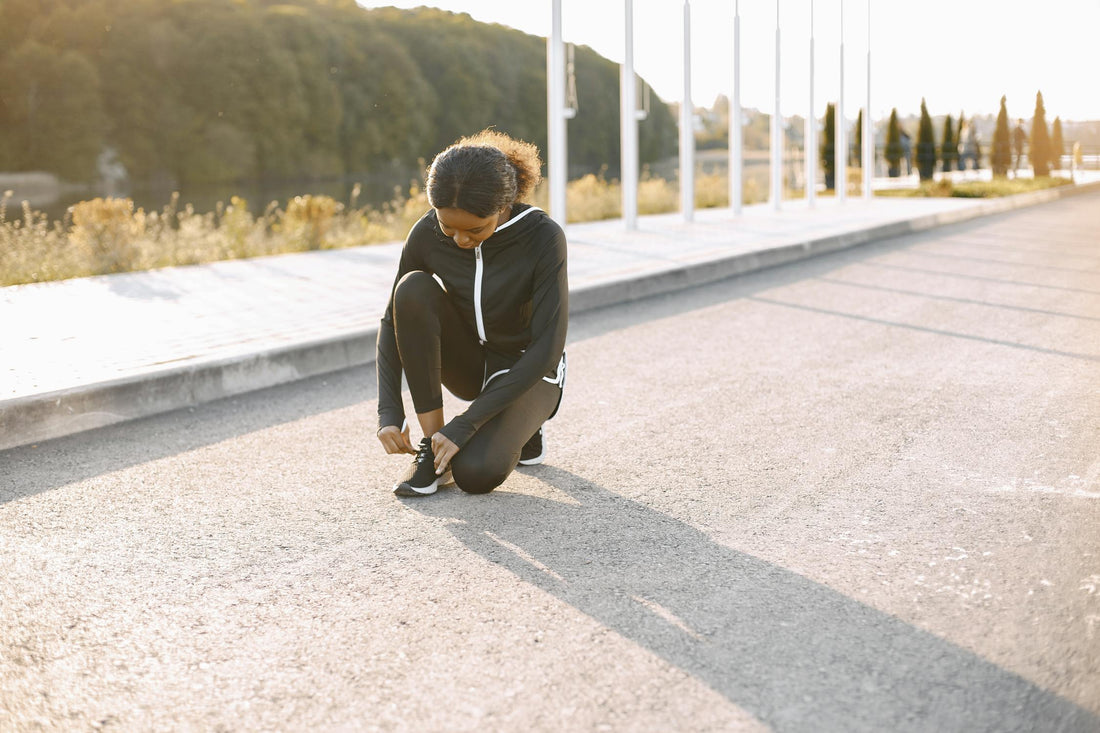Walking, while less intense, activates fat-burning mechanisms more effectively during the activity itself and allows for longer durations of exercise. Both approaches can lead to significant weight loss when implemented consistently.
The decision between walking and running isn't just about calories burned – it's about finding a sustainable approach that you can maintain over time.
Your current fitness level, joint health, available time, and even your neighborhood's layout can all influence which activity might work better for you.
Walking and Running: A Comparison
The science behind walking and running reveals important differences in how these activities impact weight loss.
Running typically burns more calories per minute – around 13.2 calories compared to walking's 7.6 calories at a moderate pace.
However, this straightforward comparison doesn't tell the complete story of how each activity influences weight loss.
Walking offers distinct advantages in terms of sustainability and accessibility. You can maintain a walking routine for longer periods without risking overtraining or injury.
This lower-impact nature means you can practice it more frequently, potentially leading to greater total calorie burn over time despite the lower per-minute energy expenditure.
Running's higher intensity provides unique benefits through the afterburn effect, where your body continues to burn calories at an elevated rate even after you've finished exercising.
This effect, known as excess post-exercise oxygen consumption (EPOC), can significantly contribute to your daily calorie burn.
The psychology of exercise adherence also plays a crucial role. Walking's lower intensity makes it less intimidating and easier to maintain as a daily habit.
Running, while more challenging, can provide a greater sense of accomplishment and might better satisfy those seeking a more intense workout experience.
Benefits of Both Activities for Weight Loss
Walking offers several unique advantages for weight loss. It's low-impact, making it accessible to most people regardless of fitness level.
Walking also helps reduce cortisol levels, which can be beneficial for weight loss since high cortisol can promote fat storage, especially around the midsection..
The higher intensity creates a more significant afterburn effect, known as excess post-exercise oxygen consumption (EPOC), meaning you continue burning calories at an elevated rate even after you've finished exercising.
Running also tends to suppress appetite more effectively than walking, which can help with calorie control.
Additionally, running builds more lower body muscle mass, which can increase your resting metabolic rate.
The Gears Needed for Your Activities
The right gear can significantly impact your success with both walking and running for weight loss.
For walking, invest in comfortable, supportive shoes with good arch support and cushioning. Consider moisture-wicking socks to prevent blisters and maintain comfort during longer walks.
Running requires more specialized gear. Look for running shoes that match your gait and foot type. Many specialty running stores offer gait analysis to help you find the perfect fit. Consider compression gear to support your muscles during higher-intensity runs.
For both activities, proper clothing that allows for full range of motion while managing moisture becomes essential. Layering options help you adapt to changing weather conditions, ensuring you can maintain your routine year-round.
Tracking devices like fitness watches or smartphone apps can help monitor your progress with either activity.
These tools provide valuable data about distance, pace, and calories burned, helping you optimize your workouts for weight loss.
Fuel For Your Body
Nutrition plays a vital role in supporting both walking and running for weight loss. The key difference lies in timing and quantity.
For walking, normal meal timing usually suffices, though staying well-hydrated remains important.
Running requires more careful attention to pre and post-exercise nutrition. Consider a small carbohydrate-rich snack about 30 minutes before running to maintain energy levels. After running, focus on protein intake to support muscle recovery.
Hydration becomes particularly crucial for both activities. While walking may not make you sweat as much as running, maintaining proper hydration supports optimal fat metabolism and energy levels.
Electrolyte balance deserves special attention, especially for longer duration activities or exercise in warm weather. Consider sugar-free electrolyte supplements for runs lasting longer than an hour or intense walking sessions in hot conditions.
Conclusion
The decision between walking and running for weight loss shouldn't be viewed as an either-or choice. Many successful weight loss programs incorporate both activities, using walking for active recovery days and running for higher-intensity workouts.
Consider starting with walking if you're new to exercise or returning after a break. You can gradually increase your pace and eventually incorporate running intervals as your fitness improves.
Remember that the most effective exercise for weight loss is the one you'll stick with consistently. Whether you choose walking, running, or a combination of both, focus on creating a sustainable routine that fits your lifestyle and supports your long-term health goals.
Frequently Asked Questions
-
Is running or walking better for weight loss?
Both can be effective – running burns more calories per minute, but walking allows for longer sessions and better adherence. The best choice depends on your fitness level, time availability, and personal preferences.
-
How long should I walk or run to lose weight?
Aim for at least 30 minutes per session, 4-5 times per week. Walking sessions can be longer (45-60 minutes), while running sessions might be shorter (30-45 minutes) due to higher intensity.
-
Can I combine walking and running for better results?
Yes! Many successful weight loss programs incorporate both. Start with walking, then gradually add running intervals as your fitness improves. This approach maximizes benefits while minimizing injury risk.
-
Will running damage my joints if I'm overweight?
Starting with walking is recommended if you're significantly overweight. As you lose weight and build strength, you can gradually introduce running intervals. Proper shoes and form are crucial for joint protection.
-
How many calories do walking and running burn?
Running typically burns 13.2 calories per minute, while walking burns about 7.6 calories per minute at a moderate pace. However, total calorie burn depends on factors like intensity, duration, and body weight.
-
Should I eat before walking or running?
Walking usually doesn't require special meal timing. For running, a small carbohydrate-rich snack 30 minutes before can help maintain energy levels. Always stay hydrated for both activities.
-
How often should I replace my walking or running shoes?
Replace running shoes every 400-500 miles or when you notice wear patterns. Walking shoes can last longer but should be replaced every 500-700 miles or when support diminishes.
-
Can I lose weight by walking or running without changing my diet?
While exercise helps, combining it with proper nutrition yields better results. Creating a caloric deficit through both diet and exercise leads to more sustainable weight loss.
-
Which burns more fat: walking or running?
While running burns more total calories, walking can be more effective for fat burning during the activity itself. However, running's afterburn effect can lead to greater total fat loss over time.
-
How do I stay motivated with either activity?
Track your progress, set realistic goals, and vary your routes to maintain interest. Consider joining walking or running groups for social support and accountability.
Sources and Citations
-
Journal of Exercise Science & Fitness (2024): "Comparative Analysis of Walking vs Running for Weight Loss" Research comparing the effectiveness of both activities for weight management.
-
Sports Medicine Review (2023): "Impact of Exercise Intensity on Weight Loss Outcomes" Study examining how different exercise intensities affect weight loss success.
-
International Journal of Sports Nutrition (2024): "Nutritional Requirements for Walking and Running Programs" Comprehensive analysis of dietary needs for different exercise intensities.
-
Medicine & Science in Sports & Exercise (2023): "Exercise Recovery and Weight Management" Research on recovery patterns and their impact on weight loss success.
-
American Journal of Sports Medicine (2024): "Injury Prevention in Walking and Running Programs" Guidelines for safe exercise progression and injury prevention.
-
Journal of Physical Activity & Health (2023): "Long-term Adherence to Walking vs Running Programs" Study on exercise adherence patterns and factors affecting program success.
-
Clinical Journal of Sport Medicine (2024): "Equipment Considerations for Walking and Running" Research on proper gear selection and its impact on exercise effectiveness.
-
Obesity Research & Clinical Practice (2023): "Hormonal Responses to Different Exercise Intensities" Analysis of how walking and running affect hormone levels and weight loss.
Remember that while these sources provide valuable scientific insight, individual responses to exercise vary. Always consult with healthcare providers before starting any new exercise program, especially if you have underlying health conditions or concerns.
The most successful weight loss journey is one that you can maintain long-term, whether that involves walking, running, or a combination of both. Focus on gradual progress and consistency rather than immediate results.

